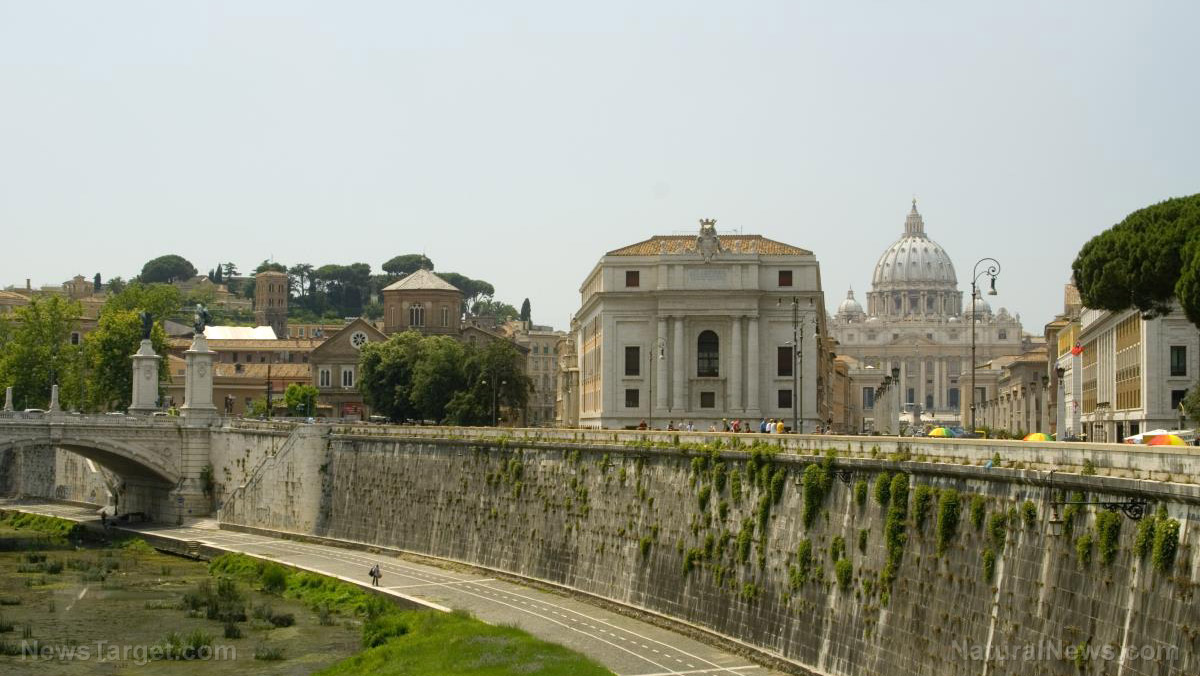Study: Ancient Romans used a "highly advanced" trade network to source imported wood for construction
By jovengray // 2021-03-26
Tweet
Share
Copy

The Roman Empire is considered one of the most successful imperial powers in history. But its greatness isn't just limited to its military, politics and society. According to a recent study by Italy's National Research Council (CNR), the Roman Empire also had a highly advanced trade network.
Experts at CNR said the evidence of this trade network could be seen in the timber used to build villas, porticos and ships in ancient Rome. Their report noted that the planks used to build these structures were not from indigenous trees in the country.
Lead author Mauro Bernabei and his team studied 24 well-preserved oak planks found during the construction of Rome Metro's Line C. The team measured tree-ring widths for each plank and ran statistical tests to determine the date of each plank.
Out of the 24 oak planks, 13 were successfully dated. In the report, the team said that the oaks were felled between A.D. 40 and 60, based on sapwood present in eight samples. But it was after comparing the dated planks to Mediterranean and central European oaks that the research team was able to point out the exact location of where the timber came from. The team revealed that the planks, which formed part of a Roman portico in the gardens of Sannio, were from the Jura mountains in eastern France, more than 1,000 miles away from Rome.
"This study shows that in Roman times, wood from the near-natural woodlands of north-eastern France was used for construction purposes in the center of Rome," said Bernabei. "Considering the distance, the timber sizes, and the means of transportation with all the possible obstacles along the way, our research emphasizes the importance of wood for the Romans and the powerful logistic organization of the Roman society."
They also suggested that ancient laborers sent the timber to Rome by floating it through the Saone and Rhone rivers in southeastern France. It then goes through the Mediterranean Sea, then up the Tiber river to Rome. Although the method hasn't been confirmed, the team arrived at this conclusion by considering the timber's dimensions and the distance that it traveled.
All this, Bernabei added, meant that Rome's trade network and logistical organization were highly advanced.
Learning more about ancient Rome
According to local legend, the city of Rome was built along the Tiber by Romulus and his twin brother Remus in 753 B.C. From there, it grew into a vast empire: At its height, its borders stretched to Britannia (modern-day Britain) in the north, Lusitania (southern Portugal and western Spain) in the west, Egypt in the south and Cappadocia (eastern Turkey) in the east. Historians say that Rome's unparalleled military strength is the primary reason for its dominance. A testament to this is Rome's decisive victory over Carthage during the Punic Wars (264–146 B.C.). Beyond its military prowess, the Roman Empire was known for being the first to develop cement and concrete, which led to the construction of buildings and highways. Rome was also the nexus of literature, religion and medicine in the ancient world. To note, newspapers and books trace their origins to ancient Rome. (Related: Ancient Romans created super strong concrete by mixing aggregate with mineral-rich sea water.) Artifacts.news has more on ancient Rome. Sources include: Journals.PLOS.org DailyMail.co.uk History.com 1 History.com 2Tweet
Share
Copy
Tagged Under:
research archaeology artifacts discoveries ancient history Ancient Rome goodscience Roman history ancient roman infrastructure
You Might Also Like
Jatu-phala-tiga isn’t just a potent antioxidant, it also has potential anti-aging properties
By Evangelyn Rodriguez // Share
Harmful algal blooms can release lethal neurotoxins in the air, scientists warn
By Divina Ramirez // Share
Breakthrough (and scary) technology allows scientists to collect DNA from the air
By Ramon Tomey // Share
By Virgilio Marin // Share
Recent News
The 2026 Reckoning: America’s collapse is now unstoppable
By finnheartley // Share
15 Vitamin C rich foods that can radically transform your SKIN
By ljdevon // Share
The snacking shift: How timing and quality are redefining healthy eating
By willowt // Share











